An effective skincare routine means carefully selecting products and tips that can protect, hydrate and take care of the skin. Skincare products and tips should be decided on the basis of your skin type. While some skincare routine work for everyone; some skincare techniques are specific to particular skin types.
Learn all the basics about skin care tips and benefits here. You can plan yours depending on your skin type.
Basic Skin Care Tips For All
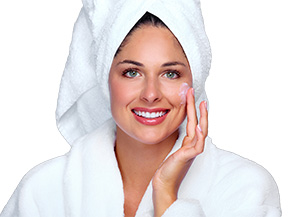
- Don’t keep makeup on your skin for long. Ensure you remove makeup either with a cleanser or makeup remover.
- Makeup should also be removed from the eyes. Heavy makeup on the eyes for long span results in puffy eyes and other eye related problems.
- Every time you apply makeup or any skincare product, ensure your skin is clean and prepped.
- While sleeping at night there should be no makeup on your body as it lets the skin breathe and rejuvenate.
- Try to opt for natural or organic skincare products that come with less harmful compositions.
- A minimum of 8 hours sleep is a must for those aiming to take care of their skin.
- Other than washing, you have to drink 8-10 glasses of water every day to keep your skin protected and hydrated.
- Skin clogging also happens due to dirty bed sheets and pillows. Change them often to pamper your skin.
Cleansing, Toning and Moisturising (CTM) For Skin
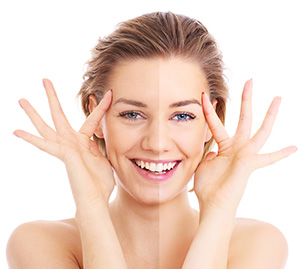
3 products that should be used regular on all skin are a cleanser, toner and a moisturiser. You can always use an exfoliator. The CTM sequence should be-
- Apply exfoliator directly on your skin, massage and wash.
- Pat dry your skin and wipe it with the cleanser on a cotton ball.
- Sprinkle the toner on specific regions of the skin specially the face.
- Last, apply a lot of moisturiser.
Before starting to exfoliate, you must ensure that the skin is devoid of makeup. Ideally, this process of CTM should be done twice in a day. Yet if your busy schedule doesn't permit so, then ensure that you try doing this at least during bedtime.
The benefits of skin cleansing, exfoliating, toning and moisturising are immense. On exfoliation, the dirt and dust particles that clog the pores of your skin come out. Cleansing clears the topical layer of dust and pollutants of the skin that you get every day. Then the third step comes, skin toning which provides a basic hydration and smooths the skin. Lastly, moisturiser keeps the skin soft for long hours.
Skin cleansing, exfoliating, toning and moisturising are very elementary skincare methods that everyone should follow. There are skincare techniques that vary from person to person depending on skin type. The skin type a person has is mostly genetically determined and should be taken care of to avoid early ageing and related skin problems. However, before deciding further on skincare, it's important to know the different kinds of skin types and which one you have.
There are 4 common skin types – normal, dry, oily and combination skin.
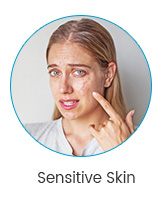
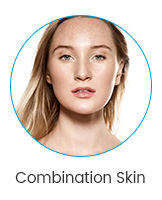

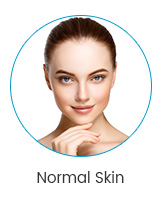
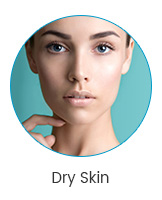
What’s Normal Skin?
Normal skin is usually radiant in appearance with less sensitivity, outbreaks or pores. It's easy to take care of normal skin and maintain it. It usually has good blood circulation which lessens the scope of oiliness. Lightly shiny in appearance, normal skin remains naturally healthy and hydrated. Yet no skin is completely devoid of problems. For normal skin, the common problems are early signs of ageing or blackheads. However, all of these normal skin problems can be avoided if right and adequate care are taken from the start.
Tips For Normal Skin:
- To wash your skin, use a mild cleanser. Apply this in circular motion as that boosts blood supply to the skin's surface.
- Keep the skin hydrated with a moisturiser to avoid early wrinkles and dehydration.
- When out during the daytime, sunscreen is very important for normal skin to protect its radiance and glow. Use a moisturiser that has an SPF of at least 15 or use a sunscreen in conjunction with your moisturiser.
- Normal skin needs exfoliation especially in areas where there are big pores and blackheads or whiteheads problems. However over exfoliation can make the skin scratchy and irritated. Do be careful about the number of times you exfoliate your skin in a week.
What’s Oily Skin?
If your skin appears greasy and shiny even after washing and cleansing, then you have oily skin. The glands of our bodies produce natural oil to keep our skin protected. For some there is extra oil or sebum secretion by the sebaceous glands that causes oily skin type. Oily skin reacts most to weather and climate changes. Also, skin breakouts like pimples, acne, and spots are frequent in the cases of oily skin.
The most common causes for oily skin types are puberty or hormonal imbalances, stress and high levels of humidity, leading to acne flare ups and enlarged pores. Exactly like other skin types, you just need to thoroughly clean the skin regularly with gentle, soap-free cleansers to get rid of this oiliness. You can try these tips to prevent and stop acne.
Tips For Oily Skin:
Those with oily skin have to make sure that each of the cosmetic or skin care products they use should be "noncomedogenic". Noncomedogenic products are devoid of common skin ingredients like coal tar, cocoa butter, pigments and dyes which prevent them from clogging or blocking pores.
To get rid of the oiliness you have to wash your face no more than twice a day or each time when you sweat a lot.
Those with oily skin must avoid scrubbers or exfoliators. The must use skincare product for oily skin is a gentle cleanser that can clear the extra oils of your skin and not let your skin pores get blocked or clogged.
Pimples are frequent on oily skin. If you see a pimple on your skin, let it take time to heal. Don't pick, pop, or squeeze pimples.
What’s Dry Skin?
When the natural oil secretion of the skin is very less than required, then it's dry skin. Dry skin is exactly opposite to the oily skin with low levels of sebum and requires constant care for hydration and comfort. A common myth is dry skin only happens on the face. Well, dry skin can happen at any part of the body and lead to flaky or cracked skin that feels tight after being wiped or washed. Gentle cleansing and a rich protective layer of lotion can help beat the dryness of your skin. It may be necessary to adjust your skin moisturiser and other skincare products for the changing seasons. Common dry skin problems are redness, roughness, flaky, itchy or cracked skin.
Tips For Dry Skin:
- Take shorter showers and baths, no more than once daily. Scrubbing should be avoided during bath for those with dry skin.
- A mild, gentle soap or cleanser is appropriate for use on dry skin. Those with dry skin must avoid deodorant soaps, household cleaners, and dish detergents. Put on gloves when using cleaning agents, solvents or household detergents.
- Always give the needed moisturisation to dry skin.After a shower, if your skin feels dry then, you can use ointments, creams, and lotions to moisturise and reapply them as and when required.
- Drinking lots of water is a must if you have dry skin problems.
- Use a humidifier, and don't let indoor temperatures get too hot.
What's Combination Skin?
If you find dry or normal in some areas and oily in other parts of your skin, then you have a combination skin type. The oil or sebum is produced mainly around the 'T-zone' of the nose and forehead but not on the cheeks, mouth and eye areas for those with combination skin. Initially, it's very difficult to figure out this skin type and can only be realised after long-term observation. With a combination skin type, even the pores look larger than normal because they're more open. Blackheads and whiteheads are closely associated problems of combination skin. To make sure if you have combination skin, take a normal cleanser and apply on your face. After some time, your T-zone and forehead will be greasy but the cheeks glow – in this instance, you have this skin type.
Tips For Combination Skin:
- CTM that is cleansing, toning and moisturising cannot be missed on combination skin.
- You have to first figure out the dry and oily regions of your skin and plan your skincare accordingly. On the dry regions like your cheeks apply lots of moisturiser while on the oily regions you can use a blotting paper to get rid of extra sebum and moisturise only once in a day.
- Using lukewarm water for washing or cleansing is more effective for combination skin.
- Exfoliator or scrubber should be avoided on this skin type.
- Toners and astringents are must for combination skin as they revive the pH balance of the skin.
What’s Sensitive Skin?
Apart from the 4 basic types, there is 1 extraordinary one of a kind skin type called sensitive skin. As the name says, sensitive skin can become inflamed and irritated easily. Even simple symptoms like redness or patches can have an extreme sensation like itchiness or burning on sensitive skin. It's more prone to skin problems like rosacea, eczema or allergies. This skin type can react to any beauty product like soaps, detergents, fragrances, or even to the natural conditions such as cold, sunny, or windy. Skin breakouts such as pimples, acne or spots are common on sensitive skin. This skin is extra dry during winter and over hydrated in summer. Sensitive skin needs maximum and constant care in the following ways.
Tips For Sensitive Skin:
- Opting for organic makeup and beauty products is a must.
- You should be in constant contact with a dermatologist for skin care. In case of extreme skin problems, consult the dermatologist.
- Try to observe and list your skin irritants. Avoid them as far as possible.
- Try to wear loose clothes such that the fabrics don’t react on your skin.
- For every new product you get for your skin, patch tests are a must.



